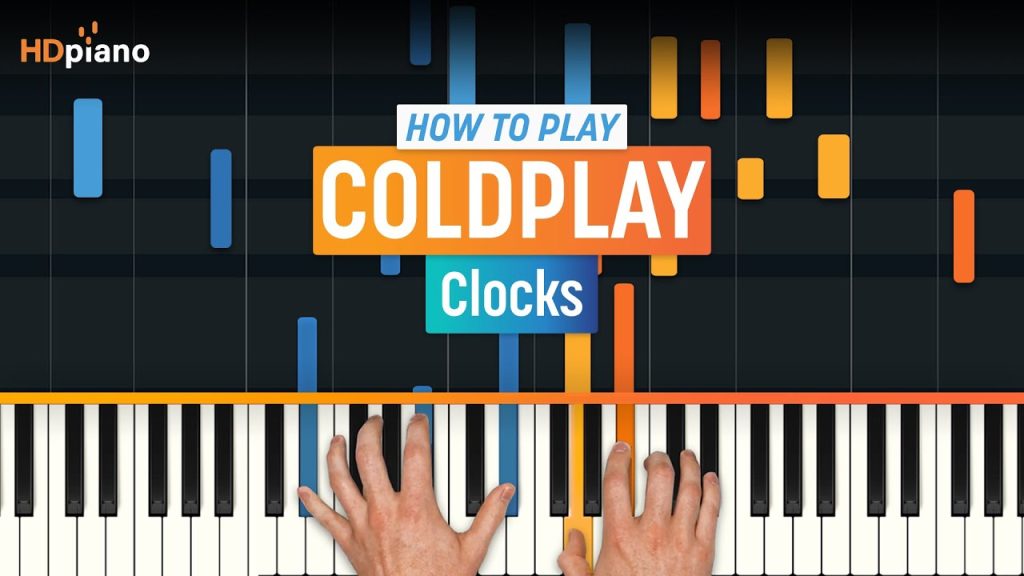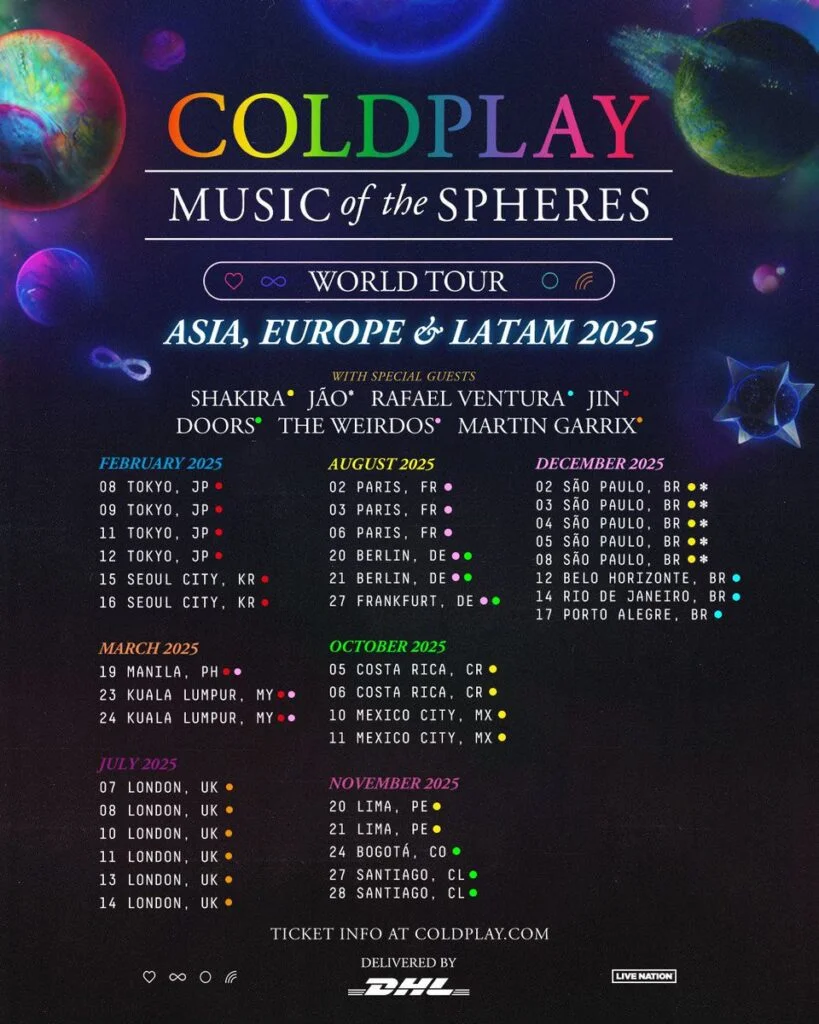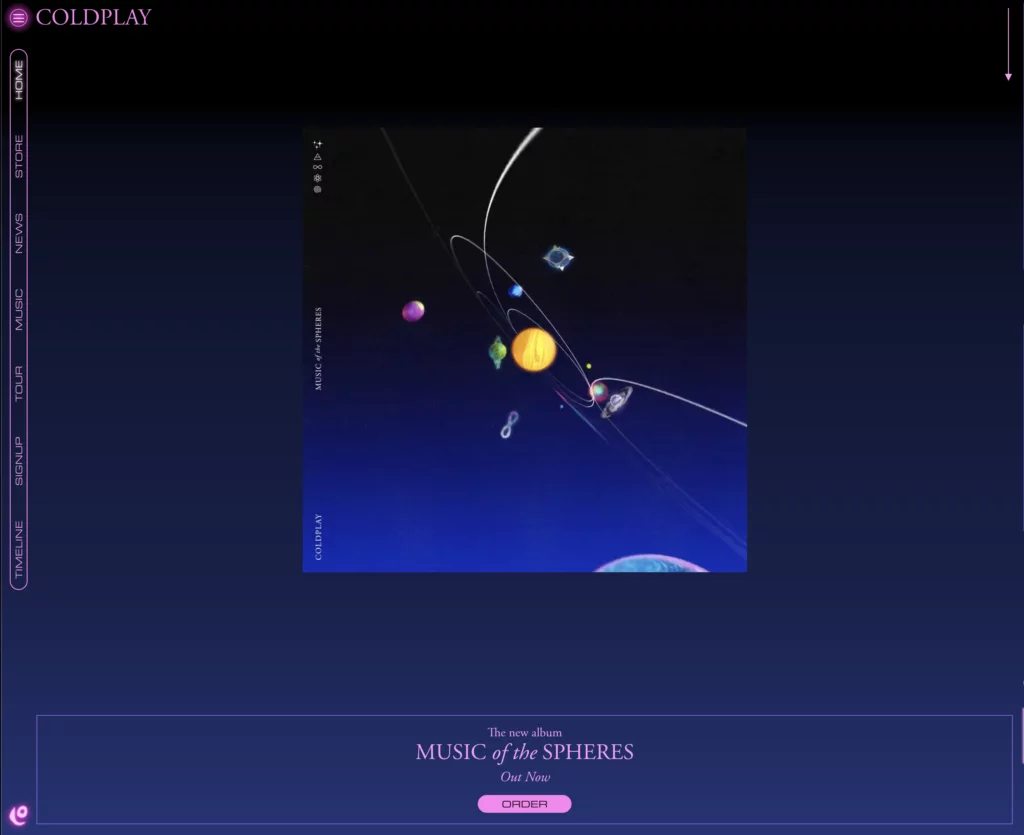Welcome to our comprehensive piano notes guide for beginners to learn Coldplay’s mesmerizing song “Clocks.” This iconic track has captivated audiences worldwide with its haunting melody and captivating lyrics. This blog will delve into the intricacies of playing “Clocks” on the piano, breaking down the notes and chords to help you master this famous piece. Whether you are a novice pianist or looking to expand your repertoire, our step-by-step guide will provide the tools and techniques. Get ready to unlock the secrets behind “Clocks” and embark on a musical journey with Coldplay’s timeless hit.

Introduction to “Clocks” by Coldplay
“Clocks” by Coldplay is a timeless classic that has captured the hearts of music enthusiasts worldwide. Released in 2002, this iconic song is known for its haunting melody and introspective lyrics.
The History of “Clocks”
All members of Coldplay wrote the song “Clocks” for their album “A Rush of Blood to the Head.” Combining infectious piano riffs with Chris Martin’s emotive vocals, the Song became a massive hit upon its release.
Its distinctive piano intro and uplifting chorus have made it a favorite for pianists of all levels, making it a perfect piece for beginners to learn.
Understanding the Piano Notes
If you are looking to master “Clocks” on the piano, understanding the notes is crucial. The song mainly revolves around the repetitive piano riff that forms its backbone.
The piano notes in “Clocks” by Coldplay are relatively easy to grasp, making it an ideal choice for beginners looking to enhance their skills.

Overview of Piano Notes and Chords
Mastering Clocks by Coldplay on the piano requires a good understanding of notes and chords. Piano notes are musical notations representing the pitch and duration of a sound, while chords are multiple notes played simultaneously to create harmony.
The Basics of Piano Notes
Piano notes are named after the first seven letters of the alphabet: A, B, C, D, E, F, and G. These notes can be played on different octaves of the piano, each producing a unique sound. Understanding the specific notes and their placements is crucial in Clocks by Coldplay.
Understanding Piano Chords
Piano chords are formed by playing two or more notes together. Common chords include major, minor, and dominant chords. Each chord has a distinct sound and feeling, contributing to the overall mood of a song like Clocks by Coldplay.
- Major Chords: Create a happy and uplifting sound.
- Minor Chords: Evoke a sense of melancholy or introspection.
- Dominant Chords: Add tension and lead to resolution in music.
Breaking Down the Intro Section
When diving into the enchanting world of piano music, mastering iconic pieces like “Clocks” by Coldplay can be a rewarding experience for beginners. In this guide, we will break down the intro section of this timeless piece, focusing on the piano notes that set the tone for the entire composition.
Understanding the Melody
In the intro section of “Clocks,” the hauntingly beautiful melody unfolds gradually, captivating listeners from the first note. The interplay of notes creates a sense of anticipation and sets the mood for the rest of the song.
Playing this melody requires a keen ear for harmonies and a delicate touch on the keys. By practicing gradually and paying attention to the nuances of each note, beginners can truly master this iconic piece.
View this post on Instagram
Decoding the Chords
The intro section of “Clocks” also features intriguing chord progressions that add depth and emotion to the music. Understanding the structure of these chords is essential for capturing the song’s essence.
By identifying and practicing each chord individually, beginners can gradually build up to playing the entire progression confidently. Emphasizing the transitions between chords will help create a seamless and melodious performance.
Mastering the Verse and Chorus
Understanding the structure of the verse and chorus is crucial in mastering “Clocks” by Coldplay on the piano. The verse typically sets the song’s tone with its melodic and lyrical content, while the chorus is the catchy and repetitive part that serves as the song’s main hook.
Identifying the Verse
The verse of “Clocks” features a distinctive piano riff that repeats throughout the song. Practice playing this riff in different octaves to familiarize yourself with its melody and rhythm.
Focus on playing the verse emphasizing dynamics, which will help convey the song’s emotions effectively.
Mastering the Chorus
The chorus of “Clocks” is characterized by its uplifting and anthemic melody. Pay attention to the chord progressions and transitions between chords during the chorus.
- Practice transitioning smoothly between chords to maintain the flow of the chorus.
- Use pedal sustain strategically to create a rich and full sound during the chorus sections.
- Experiment with playing the chorus in different tempo variations to add your own interpretation to the song.
Understanding the Bridge Section
Mastering the bridge section is crucial when learning the piano notes for “Clocks” by Coldplay. The bridge is a distinctive part of the song that adds depth and emotion to the music.
Exploring the Transition
The bridge transitions between the verses and the chorus. It often introduces new melodies or harmonies that create tension and build anticipation for the song’s climax.
Understanding the dynamics and phrasing in the bridge section is essential to accurately capturing the essence of “Clocks.”
Mastering the Chord Progressions
One of the key elements of the bridge section in “Clocks” is the unique chord progression. Practice moving smoothly between the chords to maintain the flow of the music.
Emphasize the nuances in the timing and voicing of each chord to evoke the right mood and atmosphere.
Tips for Smooth Transitions
Mastering Clocks by Coldplay on the piano requires smooth transitions between notes to capture the song’s essence. Here are some tips to help you achieve flawless transitions:
Practice Finger Placement
Ensure your fingers are correctly positioned on the keys before transitioning to the next note. Practice slowly at first to build muscle memory.
Use Sustained Pedal Effectively
Use the sustained pedal to connect notes and create a seamless flow between chords. Experiment with different pedal timings to achieve the desired effect.
Focus on Timing and Rhythm
Pay attention to the timing and rhythm of each transition. Practice with a metronome to maintain a consistent pace and smooth rough edges.
Visualize the Musical Phrases
Visualize the musical phrases in your mind before playing them. This mental preparation can help you anticipate transitions and execute them with ease.
Practice Techniques for Beginners
When mastering “Clocks” by Coldplay on the piano, it’s important for beginners to start with the basics and gradually progress to more complex techniques. Below are some effective practice techniques:
Hand Positioning
Begin by ensuring your hand positioning is correct on the piano keys. Place your fingers on the keys lightly but firmly to produce clear notes.
Finger Exercises
Practice finger exercises to improve dexterity and flexibility. Start with simple finger patterns and gradually move on to more challenging exercises to strengthen your fingers.
- Example: Practice playing scales and arpeggios to enhance your finger coordination.
Rhythm Practice
Focus on mastering the rhythm of “Clocks” by Coldplay. Use a metronome to stay in tempo and practice playing the song at different speeds to develop a consistent rhythm.
View this post on Instagram
Adding Your Personal Touch
Mastering Clocks by Coldplay on the piano is not just about playing the notes correctly; it’s also about adding your personal touch to the music. You can make it truly unique and captivating by infusing your emotions, style, and interpretation into the piece.
Expressing Emotions Through Music
Music is a powerful medium for expressing emotions. When playing “Clocks” by Coldplay, allow yourself to feel the music deeply. Use dynamics, tempo variations, and pauses to convey the feelings embedded in the piece.
Adding your personal touch can mean playing certain sections softly and tenderly while emphasizing others with passion and energy.
Interpreting the Melody
Each pianist has a unique way of interpreting melodies. Experiment with different phrasing, articulation, and musical nuances to give “Clocks” a fresh perspective.
- Try playing the main melody with subtle rubato to create a sense of ebb and flow.
- Explore different pedaling techniques to sustain and blend the notes harmoniously.
- Consider adding your improvisational flair to certain sections for a personalized touch.
Frequently Asked Questions
- What is ‘Mastering Clocks’ by Coldplay all about?
- Mastering Clocks by Coldplay is popular for its haunting melody and meaningful lyrics. It has become a classic in the world of music and is loved by fans worldwide.
- Is ‘Mastering Clocks’ by Coldplay a good choice for beginners to learn on the piano?
- Yes, ‘Mastering Clocks’ by Coldplay is a great song for beginners to learn on the piano. Its simple yet beautiful melody is perfect for beginners.
- Are any specific piano notes or chords important in ‘Mastering Clocks’?
- Yes, specific piano notes and chords are essential to playing ‘Mastering Clocks’ by Coldplay. Understanding and practicing these notes will help you master the song more effectively.
- Where can I find a piano notes guide for ‘Mastering Clocks’ by Coldplay?
- Various resources are available online, such as Coldplay’s piano notes guide for ‘Mastering Clocks.’ You can also search for tutorials, sheet music, or videos to learn how to play the song.
- I have never played the piano before. Can I still learn ‘Mastering Clocks’ by Coldplay?
- Absolutely! Even if you are a complete beginner with no prior piano experience, you can still learn ‘Mastering Clocks’ by Coldplay with practice and dedication. Take it one step at a time and enjoy the learning process.
Final Thoughts
Mastering “Clocks” by Coldplay on the piano can be a rewarding journey for beginners looking to enhance their musical skills. By following our piano notes guide, you have gained valuable insights into playing this iconic song confidently and precisely.
Remember, practice makes perfect, so keep honing your skills, and don’t be afraid to make mistakes along the way. Embrace the process and enjoy the beautiful melodies of “Clocks” as you progress in your piano-playing journey.
With dedication and perseverance, you will soon be able to impress your friends and family with your rendition of this timeless classic. So, keep the notes handy, follow the rhythm, and let the music of “Clocks” by Coldplay fill the room with joy and harmony.






